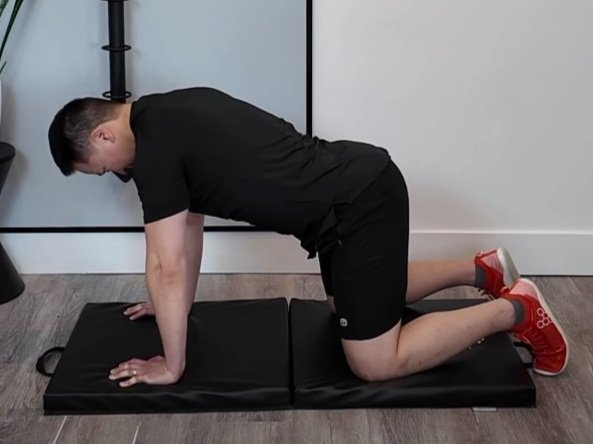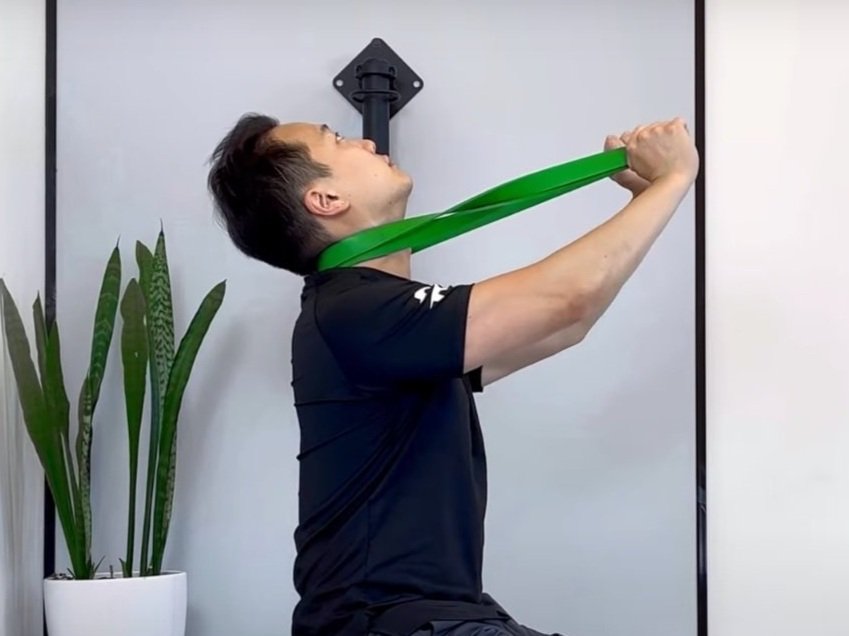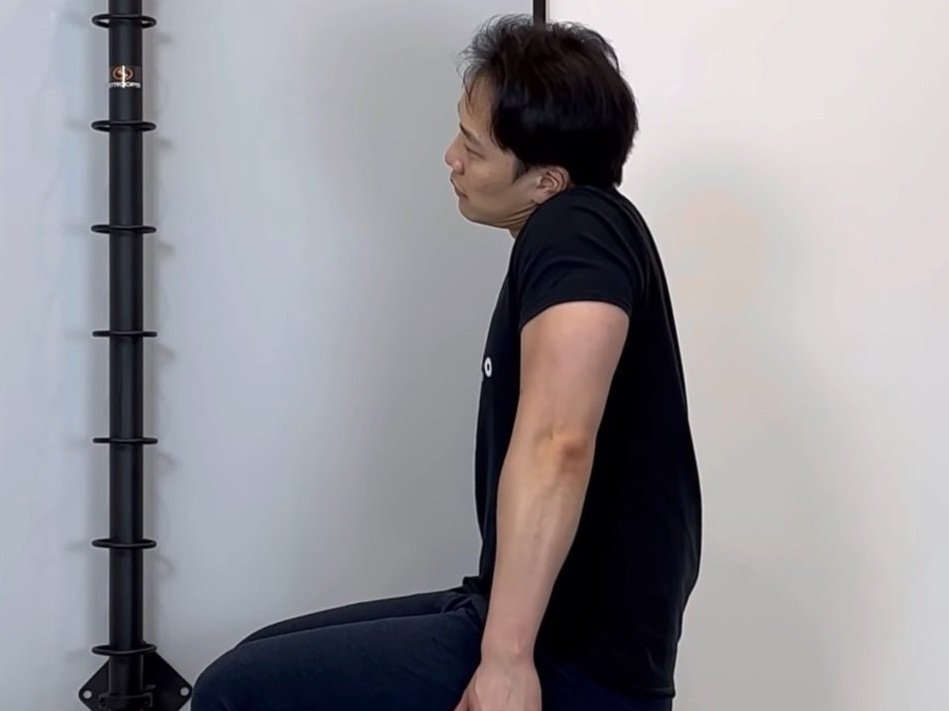What Is Whiplash
How do you know if you’ve got whiplash?
Learn about the signs and symptoms of this neck and head injury
Mechanism of Whiplash Injury
Whiplash or whiplash associated disorder, is a combination of symptoms that affect the neck and back resulting from multidirectional strains and complex forces following a motor vehicle accident. During low speed impacts you can experience a combination of axial compression, distraction, flexion, extension, rotation and shearing forces to the cervical spine.
“The crush damage does not relate to the expected occupant injury. In fact, the less the car is damaged or crushed in a collision, the higher the acceleration of the struck vehicle and the greater risk of injury”
Phases of a collision leading to whiplash injury
During a collision, the head and neck move relative to the torso during different phases of impact. Here are the different phases when rear-ended:
Phase 1 - Ramping - This happens at 50 milliseconds following a collision. During this phase the torso is pushed forwards by your seat. This causes straightening of the thoracic and cervical spine as the head remains stationary relative to the thoracic spine. There is a upward movement of the torso as well which causes the cervical spine to be compressed (axial forces). This leads to momentary loosening of the cervical ligaments making it easier for shearing forces to cause soft tissue injury.
Phase 2 - S-shaped curve - This happens at 75 milliseconds following a collision. During this phase, the car seat continues to push the torso forward, however the head remains stationary due to inertia. As a result, an S-sharped curve is experienced in the neck. In this position, all of the bending takes place at the lower cervical spine. This rapid bending can result in local ligament damage.
Phase 3a - Motion During a Collision - This occurs at 150 milliseconds following a collision. Here the torso continues to be pushed forwards and the head is now relatively behind the torso (in extension). During this phase, if the head rest is too low, the head may bend backwards over the head rest. At this point, damage to the ligaments on the front part of your neck can be injured due to the hyperextension of the cervical spine.
Phase 3b - Motion during a collision - The head and torso are then thrown forwards due to the continued motion of the card seat forwards.
“To take an extreme example; If the car was stuck in concrete, the damage sustained might be very great but the occupants would not be injured because the car could not move forward, whereas on ice, the damage to the car could be slight but the injuries sustained might be severe because of the rapid acceleration permitted”
How does whiplash feel?
Whiplash symptoms can vary depending on the type of accident experienced and the extent of your injury. Some symptoms include:
Neck Pain
Headache
Shoulder Pain
Low Back Pain
Interscapular Pain
Arm and/or hand numbness
Thoracic Outlet Syndrome (TOS)
TMJ pain
Dizziness
Tinnitus
Difficulties with swallowing
Visual dysfunctions
Concentration / Memory / cognitive deficits
Knee Injuries
Factors influencing a whiplash injury
There are a few variables that can affect the severity of your injury. By knowing these you can minimize the extent of damage you may receive from a motor vehicle accident. They are:
Relative size of the vehicle - the larger your vehicle is relative to the car colliding with you the better it is. The vice versa is true as well, if the vehicle hitting you is larger the risk of injury is higher.
Use of a head restraint - when at the correct level this can minimize the amount of extension the neck experiences. The center of the head restraint (aka head rest) should be at the level of the ears.
Seat positioning - If a driver is sitting unusually close to a steering wheel, they may feel the blunt force of an air bag opening during a collision. This may also restrict the bad from being deployed as space is required for it to open up leading to a high risk of injury
Road surface conditions - since slick roads lead to higher acceleration of the struck vehicle it is considered a risk factor for injury.
Occupant awareness - previously it was believed that being caught by surprise would minimize injury as the muscles are more likely to be relaxed during the initial impact of the accident. However, although muscular damage may be minimized, increased forces may instead be experienced at the ligaments and joints of the neck. Since these structures require more time to recover than damaged muscles, it is less ideal to be caught by surprise.
Head position - a neutral or extension head position pre-collision is considered safer than a flexion position. This is because the flexion position leads to a greater S-shaped curve which results in more stress on the lower cervical spine. Likewise a turned head will lead to an increased risk of injury due to greater impact on the joints, disc and ligaments of the neck.
Age, gender, previous history - Generally the risk of injury increases when you’re of older age, female gender, and/or if a previous injury existed prior to the collision
Is whiplash felt immediately?
Whiplash can be felt immediately but symptoms may develop days to months after the car accident. Immediate pain may be due to:
Muscles
Discs
Fractures
Nerve Roots
Facet Joints
Ligament sprains
Can whiplash symptoms be delayed?
The short answer is yes. Pain can be delayed for many days or weeks. Some conditions that may develop as a result of the collision include:
Symptomatic Disc Bulge
Radicular Pain
Myofascial Pain Syndrome
Thoracic Outlet Syndrome
Post-Concussion Syndrome
When a delay is experienced it is suggested that a secondary mechanical or myofascial irritation is present. Some studies report that up to 65% of people can have radicular pain within three months of the accident, and 35% had pain after 3 months (1).
Does whiplash affect your back?
Due to the abrupt straightening of the spine during the initial stages of impact, whiplash can affect your back. This is due to compressive loads experienced in the spine. Muscular injuries may also be experienced when bracing for impact. Muscle strains can occur as they contract against high eccentric loads from rapid flexion-extension positions.
How do I know if my neck injury is serious?
You will be able to find out the extent of your injury through a collaborative approach with your health care team. You can visit your medical doctor or chiropractor for a referral for an x-ray to see if any fractures or dislocations are present following the accident. If no structural damage is observed, then proceeding with your chiropractor or physiotherapist for an initial assessment is ideal. During this appointment your clinician will assess your nerves, joints, muscles, ligaments, and tendons. Your physiotherapist or chiropractor can then communicate a diagnosis (revealing the severity of the injury).
Does whiplash show up on xray?
Since most injuries resulting from a whiplash are due to soft tissue damage, they will not be seen on an x-ray or MRI. Injuries that cannot be clearly seen include:
Ligament tear
Rim lesions
Endplate avulsions
Anterior longitudinal ligament tears
Injuries to the articular pillar, articular process and uncinate process
Facet joint capsular tear
X-rays will provide useful information for ruling out severe injuries. Due to the nature of the mechanism of injury, a referral for an x-ray may occur to rule out:
Facet joint dislocation or fracture
Articular Fractures
Compression fractures
Can a chiropractor fix whiplash injury?
A chiropractor, physiotherapist and/or massage therapist can improve your injury and symptoms. By using a combination of spinal manipulation / mobilization, physical rehabilitation, and myofascial release therapy, these health professionals have been shown to provide statistically significant improvements. Additional modalities such as acupuncture, cold laser, or shockwave may also be used to promote recovery depending on your specific injury. To book an appointment with a Markham chiropractor, physiotherapist or massage therapist you can click the button below.
Is it OK to massage whiplash?
If no severe injuries are observed (fractures, dislocations) following the accident then massage therapy is an effective option for treating whiplash associated myofascial pain syndrome. Myofascial pain syndrome can include the following symptoms:
Headaches
Neck or back pain
Sore throat
Extremity pain
Referral Pain
It’ll be important to remember that myofascial pain syndrome may not be solely responsible for the whiplash symptoms that you are experiencing. A combined approach utilizing joint manipulation or mobilization (for joint injuries), and rehabilitative exercise (to restore function) may be necessary to reach full recovery.
Is ice or heat better for whiplash?
Both ice or heat (or a combination of the two) can be used for pain management. Although it may not necessarily help with speeding up the recovery process, it is often used to decrease symptoms temporarily. The use of heat or ice is up to patient preference, meaning you get to choose which to use based on which you like better!
How do you treat whiplash?
The treatment approach for whiplash will depend on which structures are generating pain.
Muscle Strain - Massage therapy or myofascial release therapy (traditionally known as ischemic compression with stretch) may be used to decrease pain and increase circulation. Strengthening exercises should also be incorporated into the treatment to restore function to the muscles of the neck and back.
Facet Joint Irritation - Joint mobilizations focused on long axis distraction techniques can be used to promote synovial fluid circulation (and therefore nutrient delivery to the joint). Chiropractic techniques such as spinal manipulation may also be used to decrease pain, increase range of motion, and improve joint proprioception. Range of motion exercises can be used to promote joint mobility.
Ligamentous injury - Stability exercises to decrease ligamentous stress may be prescribed by your physiotherapist or chiropractor. Exercises focused on increase muscular endurance of your deep neck flexors will help to restore neck function. Modalities such as cold laser or (electro)acupuncture may be used to promote blood flow and decrease pain.
Nerve compression - A combined approach may be used to decrease nerve symptoms. Joint mobilizations/manipulation and myofascial release therapy targeted to the site of nerve compression can be used to alleviate symptoms. Exercises such as PNF stretching or nerve flossing may also be used to improve nerve mobility and function. Modalities such as low level laser therapy (aka cold laser) and acupuncture may also be used to improve recovery.
“If the passenger is aware of and anticipates a collision, and makes his neck muscles tense, he can tolerate more severe impact”
Written by:
Dr. David Song, Chiropractor, Rehab Coach
References
Quinter JL. A study of upper limb pain and paresthesia following neck injury in motor vehicle accidents: assessment of the brachial plexus tension test of Elvey. Br J Rheumatol.






















